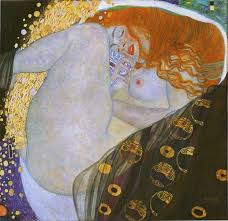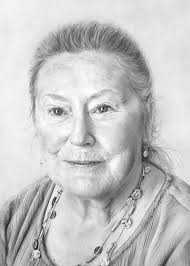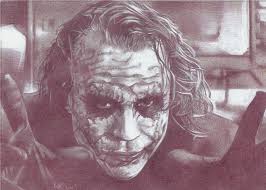Source:Goolge.com.pk
Pencil Drawing Art For Sale Biography
Take a look at some of the pictures on the Etching House web site or in the Etching House Norman Lindsay Artists Archive located on the artist's page.
The Norman Lindsay gallery is for all ages and gender, Etching House suggests you see the film Sirens; it is a very well made Australian Film.
About Norman Lindsay by Etching House -
Norman Alfred Williams Lindsay (1879-1969) is arguably one off's greatest artists. He worked in all media - etching, pencil, charcoal, pen and ink, wash, woodcut, lithograph, watercolour and oil as well as producing many sculptures, both indoor and for the garden. There are more books on Norman Lindsay, about Norman Lindsay or illustrated by Norman Lindsay than any other Australian artist.
Norman Lindsay is well represented in the National Gallery of as well as every State Gallery plus many regional galleries in. In November 2002 the magnificent oil painting Spring's Innocence was purchased by the National Gallery of Victoria in Melbourne and is now on public view.
Norman Lindsay is also well represented by visual art, illustrated books or literature in numerous overseas galleries, libraries and public institutions.
Large collection of Norman Lindsay Etchings and Facsimile etchings at Etching House, Who Follows Unknown seas, Aloha, plus many more.
FROM ETCHING HOUSE "THE CRAFT and ART OF ETCHINGS as FINE ART" by Norman Lindsay
As etching appears to be a lost art today and the public interested in art must have very little knowledge of its technical problems, it may be advisable to explain this as briefly as possible.
A highly-polished copper plate is first cleaned with caustic soda and dilute nitric acid. A hand grip is then attached to it, as the plate must not be touched once it is cleaned. It is then held face up over a gas or oil burner till warmed sufficiently to melt the etching ground. The ground is a composition of bitumen, which, through a covering of fine silk, is rubbed over the surface of the copper in a thin coating. A pad, called a dabber, made of white kid padded with cotton wool, is dabbed forcibly over the ground, spreading it thinly and evenly over the surface of the copper. It must be perfectly smooth and even or it is liable to lift from the copper in the acid. The smoke, but not the flame, alone must touch the ground, or it is liable to be burned and so crack off under the acid. The ground is blackened so that the copper line will shine through it when the design is drawn on the copper with a needle point. The preparation of the plate requires considerable experience before it can be done efficiently.
The next operation is to transfer the design in outline to the blackened ground. An effective method of achieving this transfer is to blacken a sheet of tissue paper with soft lead pencil to act as a carbon copying paper. This is placed over the plate and the pencil design for the etching pinned over it and traced lightly with the etching needle. The plate is then ready to be needled.
As the hand must never touch the ground, a support is placed across the plate for the hand. If a very delicate technique is necessary it must be drawn under a magnifying glass of about a four-inch focus. This enforces an extremely cramped posture on the etcher while working on a plate.
There are various methods of needling a plate, too involved to be discussed in a brief note such as this. The method employed in the etchings here has been to etch out the fine grey tones first, and by a series of re-etching to add the half-tones and blacks. The etching itself is done by placing the plate in a solution of dilute nitric acid which bites only into the parts of the copper exposed by the needling. While in the acid it is carefully timed by the etcher, and this is the most anxious problem he has to face, for if he miscalculates he may either under-etch or over-etch the passage in the acid, and thereby ruin the result of a week or more of careful work in needling the design. No amount of experience can give him assurance over his timing. He may have got a hard copper which etches slowly or a soft one which etches too quickly. The acid is constantly weakening as it works on the plate, and he must keep adding fresh acid to try and keep it at an even strength. Having no means of testing its strength, he must trust to luck or cunning on equal terms to get the result he wants, and he can only be sure of that by wiping off the ground and taking a proof of the plate. If the result is a failure he has no resource but to discard the plate and start all over again with a fresh one. If the result of the first proofing is satisfactory he re cleans and re grounds the plate and sets about working on the next section to be etched, and so on, proving and re grounding as he goes till the plate is finally completed. If the technique employed is one dealing with delicate tones and elaborate detail he may be a couple of months over one plate; and that he may discard finally if dissatisfied with its lack of the quality he has sought to achieve. It may be said of the etchings that their average is of one accepted to two discarded.








Pencil Drawing Art For Sale Biography
Take a look at some of the pictures on the Etching House web site or in the Etching House Norman Lindsay Artists Archive located on the artist's page.
The Norman Lindsay gallery is for all ages and gender, Etching House suggests you see the film Sirens; it is a very well made Australian Film.
About Norman Lindsay by Etching House -
Norman Alfred Williams Lindsay (1879-1969) is arguably one off's greatest artists. He worked in all media - etching, pencil, charcoal, pen and ink, wash, woodcut, lithograph, watercolour and oil as well as producing many sculptures, both indoor and for the garden. There are more books on Norman Lindsay, about Norman Lindsay or illustrated by Norman Lindsay than any other Australian artist.
Norman Lindsay is well represented in the National Gallery of as well as every State Gallery plus many regional galleries in. In November 2002 the magnificent oil painting Spring's Innocence was purchased by the National Gallery of Victoria in Melbourne and is now on public view.
Norman Lindsay is also well represented by visual art, illustrated books or literature in numerous overseas galleries, libraries and public institutions.
Large collection of Norman Lindsay Etchings and Facsimile etchings at Etching House, Who Follows Unknown seas, Aloha, plus many more.
FROM ETCHING HOUSE "THE CRAFT and ART OF ETCHINGS as FINE ART" by Norman Lindsay
As etching appears to be a lost art today and the public interested in art must have very little knowledge of its technical problems, it may be advisable to explain this as briefly as possible.
A highly-polished copper plate is first cleaned with caustic soda and dilute nitric acid. A hand grip is then attached to it, as the plate must not be touched once it is cleaned. It is then held face up over a gas or oil burner till warmed sufficiently to melt the etching ground. The ground is a composition of bitumen, which, through a covering of fine silk, is rubbed over the surface of the copper in a thin coating. A pad, called a dabber, made of white kid padded with cotton wool, is dabbed forcibly over the ground, spreading it thinly and evenly over the surface of the copper. It must be perfectly smooth and even or it is liable to lift from the copper in the acid. The smoke, but not the flame, alone must touch the ground, or it is liable to be burned and so crack off under the acid. The ground is blackened so that the copper line will shine through it when the design is drawn on the copper with a needle point. The preparation of the plate requires considerable experience before it can be done efficiently.
The next operation is to transfer the design in outline to the blackened ground. An effective method of achieving this transfer is to blacken a sheet of tissue paper with soft lead pencil to act as a carbon copying paper. This is placed over the plate and the pencil design for the etching pinned over it and traced lightly with the etching needle. The plate is then ready to be needled.
As the hand must never touch the ground, a support is placed across the plate for the hand. If a very delicate technique is necessary it must be drawn under a magnifying glass of about a four-inch focus. This enforces an extremely cramped posture on the etcher while working on a plate.
There are various methods of needling a plate, too involved to be discussed in a brief note such as this. The method employed in the etchings here has been to etch out the fine grey tones first, and by a series of re-etching to add the half-tones and blacks. The etching itself is done by placing the plate in a solution of dilute nitric acid which bites only into the parts of the copper exposed by the needling. While in the acid it is carefully timed by the etcher, and this is the most anxious problem he has to face, for if he miscalculates he may either under-etch or over-etch the passage in the acid, and thereby ruin the result of a week or more of careful work in needling the design. No amount of experience can give him assurance over his timing. He may have got a hard copper which etches slowly or a soft one which etches too quickly. The acid is constantly weakening as it works on the plate, and he must keep adding fresh acid to try and keep it at an even strength. Having no means of testing its strength, he must trust to luck or cunning on equal terms to get the result he wants, and he can only be sure of that by wiping off the ground and taking a proof of the plate. If the result is a failure he has no resource but to discard the plate and start all over again with a fresh one. If the result of the first proofing is satisfactory he re cleans and re grounds the plate and sets about working on the next section to be etched, and so on, proving and re grounding as he goes till the plate is finally completed. If the technique employed is one dealing with delicate tones and elaborate detail he may be a couple of months over one plate; and that he may discard finally if dissatisfied with its lack of the quality he has sought to achieve. It may be said of the etchings that their average is of one accepted to two discarded.
Pencil Drawing Art For Sale
Pencil Drawing Art For Sale
Pencil Drawing Art For Sale
Pencil Drawing Art For Sale
Pencil Drawing Art For Sale
Pencil Drawing Art For Sale
Pencil Drawing Art For Sale
Pencil Drawing Art For Sale
Pencil Drawing Art For Sale
Art For Sale
Artwork For Sale
No comments:
Post a Comment